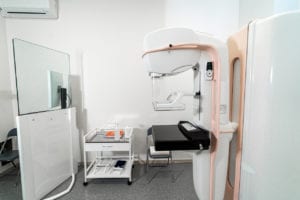
Mammograms have been instrumental in the prevention and reduction of breast cancer fatality by nearly 40 percent over the last three decades. This is why the American Cancer Society (ACS) encourages women who have an average risk to go for yearly mammograms starting at age 45 until age 54, and every two years for women 55 years and older.
There are two types of mammograms: the traditional 2D and the digital 3D. If you’ve ever gone for a 2D mammogram, you may be wondering if the 3D version is any different. Apart from the fact that in a 3D mammogram, multiple images are taken of your breast in different angles and that the results are more detailed and precise, the procedures themselves are nearly identical.
If this is your first time to go for a 3D mammogram, here are the things you can expect at your appointment.
During the Procedure
The radiologist will instruct you to undress from the waist up and will give you an X-ray gown to put on. Wear a two-piece outfit to avoid the hassle, and make sure to remove your jewelry beforehand.
The radiologist will then proceed with positioning one of your breasts on a special X-ray machine platform and adjust it to match your height. The radiologist will assist you in positioning your head and torso in an angle that will allow for an obstructed view of your breast.
The radiologist will x-ray your breasts individually. Take note that the compression may give you slight discomfort, but it shouldn’t be unbearable. If you have low pain threshold, you can let your provider know beforehand, so you will be given pain relievers two hours prior to the procedure to minimize the pain.
Your breast is then gradually pressed against the platform by a clear plastic plate. Pressure is part of the procedure and is intended to spread out the breast tissue; it will be applied for a few seconds. Let the radiologist know if the discomfort is unbearable.
To gather multiple images, the machine will move above you from side to side. The radiologist may instruct you not to move and hold your breath for a few seconds.
The pressure on your breast is then released; the machine will then reposition to capture an image of your breast from the side. The same process goes for your other breast.
Getting Your Results
The radiologist will examine the images gathered during your 3D mammogram and analyze them in small fractions for abnormalities that may indicate breast cancer.
If the results are normal, you won’t need any further evaluation. Otherwise, you’ll likely receive a referral for further diagnostic testing, which usually includes an ultrasound or an MRI. Your provider may also order a biopsy, which involves collecting suspicious cells in your breast and checking them for cancer.
State-of-the-Art Diagnostic Imaging Center in Bronx, NY
If you want to take proactive measures to maintain your breast health, schedule a mammogram appointment with us at Starling Diagnostics. We have a comprehensive suite of sophisticated diagnostic imaging equipment, such as a mammography machine that can generate both 2D and 3D images.
At Starling Diagnostics, we take pride in our dynamic team of board-certified radiologists who are not simply there to perform the procedure and interpret the results but to provide you with the highest quality of patient care as well.
To learn more about our 3D mammography service, including how to prepare for this outpatient procedure, call us at (718) 319-1610, or you may also use our convenient and secure online request form. If you are a primary care doctor who would like to refer a patient for a 3D mammogram, please use our online physician referral form. We look forward to serving you!
